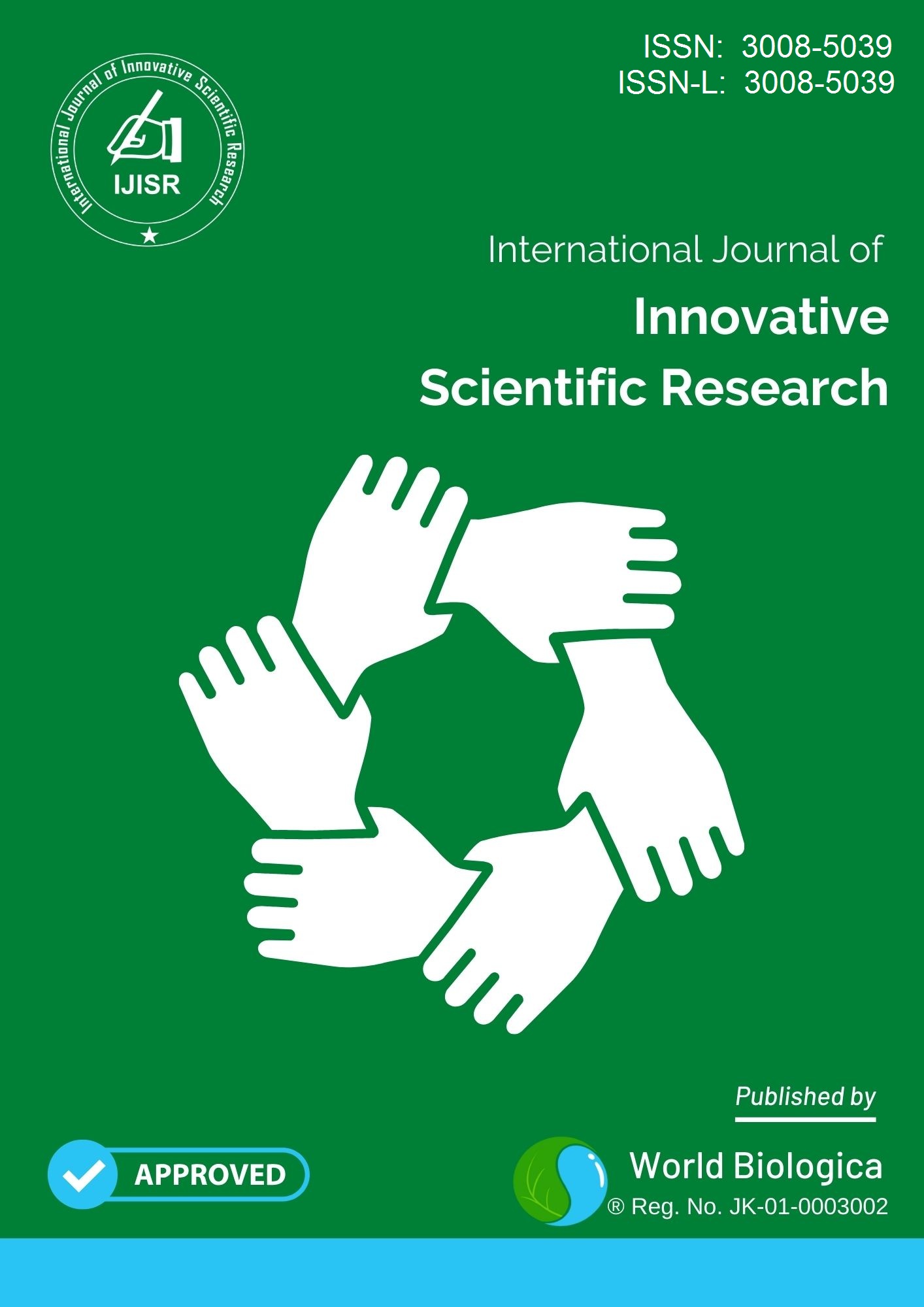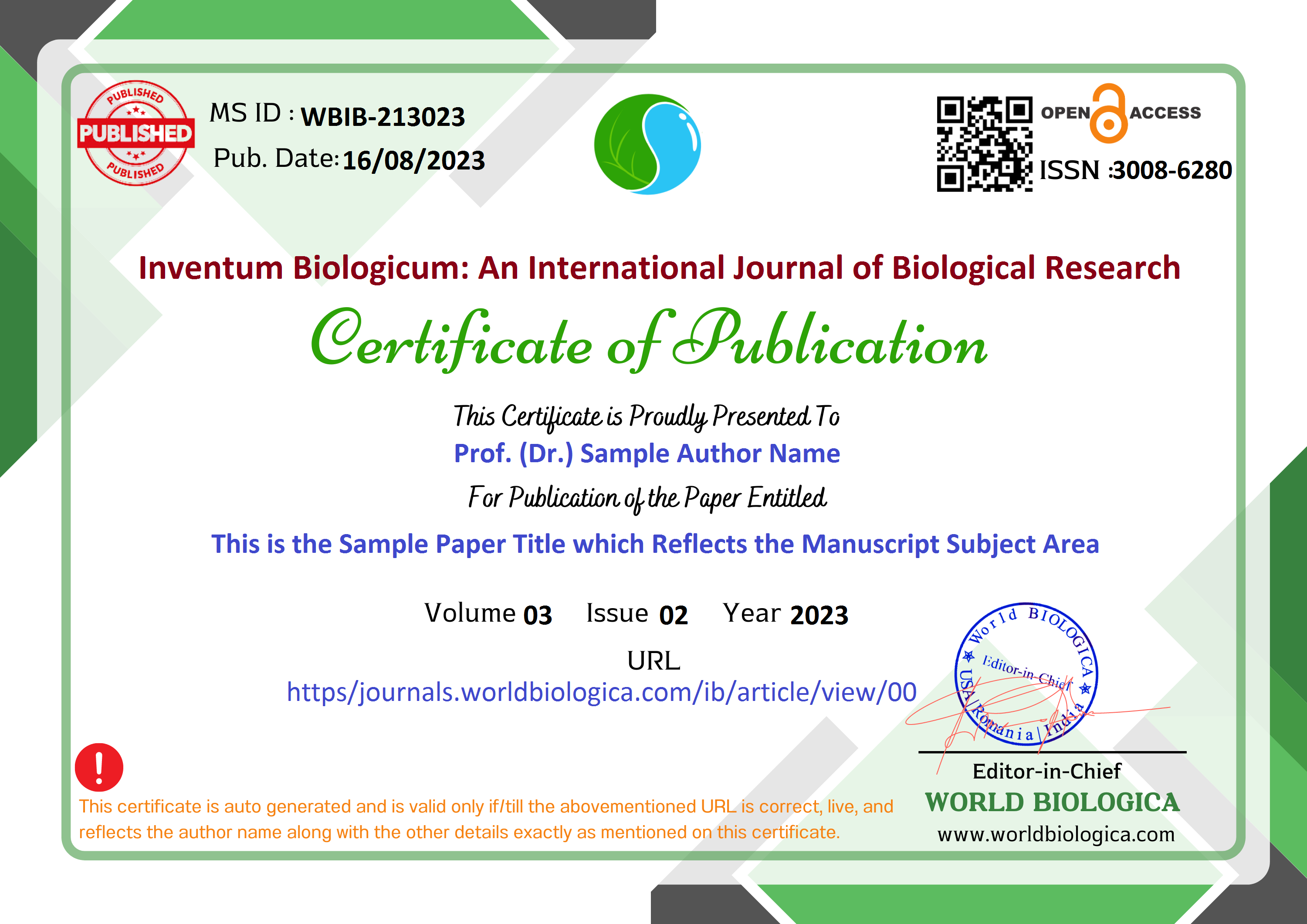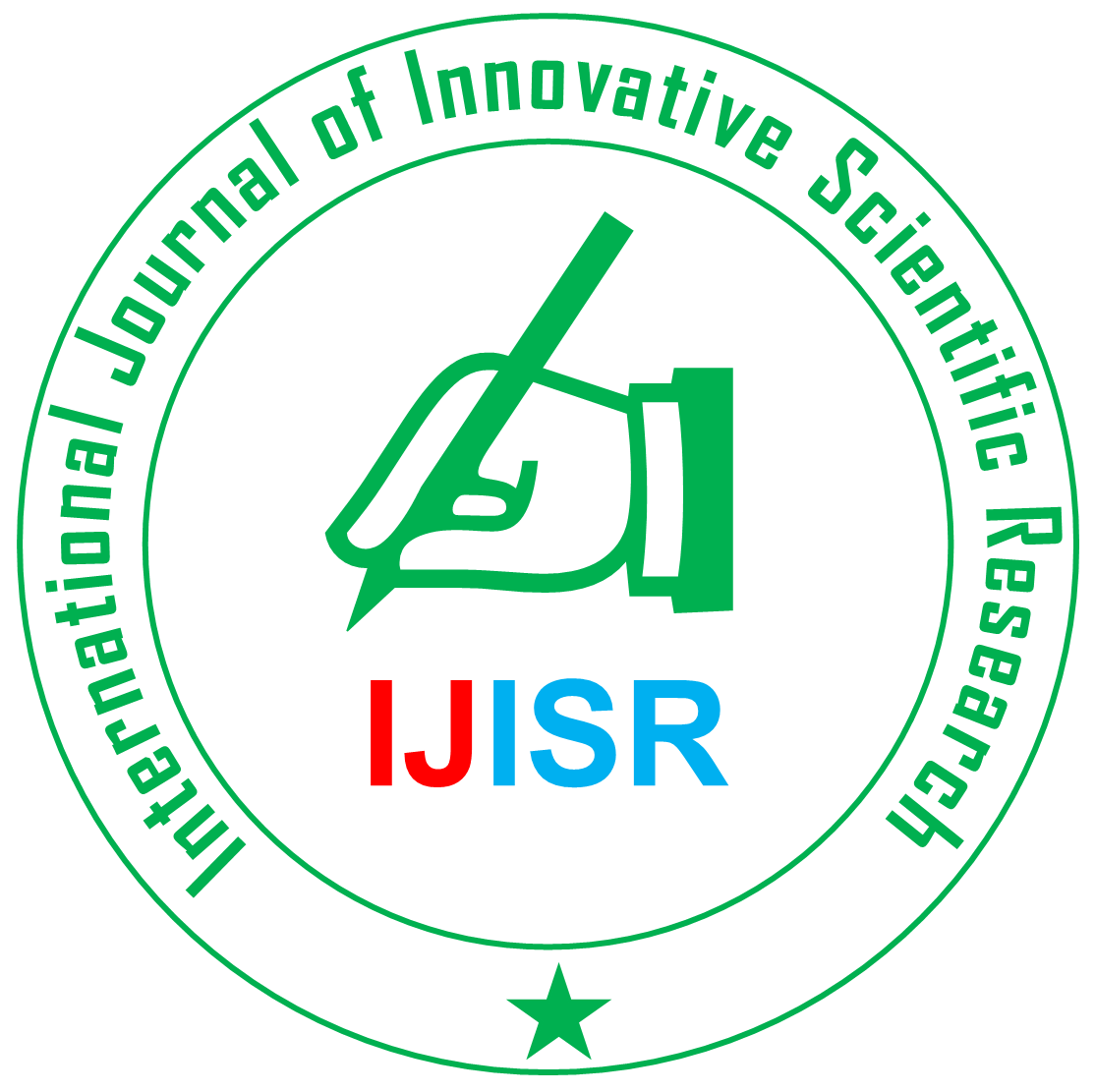Influence of Abiotic and Biotic Factors on the Behavior and Distribution of Notonecta glauca
Keywords:
Notonecta glauca, Abiotic factors, Biotic factors, Behavior, Distribution, Aquatic ecosystems, Temperature, Dissolved oxygen, Prey availabilityAbstract
The aquatic insect Notonecta glauca, commonly known as the backswimmer, inhabits a wide range of freshwater environments. Its distribution and behavior are influenced by a complex interplay of abiotic factors (e.g., water temperature, pH, and oxygen levels) and biotic factors (e.g., prey availability, competition, and predation). This research investigates how these environmental variables shape the behavior, ecological roles, and distribution of N. glauca across different aquatic habitats. Data were collected through both field studies and controlled laboratory experiments. The study finds that temperature, dissolved oxygen, and prey availability are the most significant factors influencing the species' behavior and distribution. Understanding these interactions helps clarify N. glauca's ecological importance and provides insights into how environmental changes may impact freshwater ecosystems.
Downloads
References
Anderson, N.H., & Cummins, K.W. (1979). "The Influence of Temperature on Aquatic Insects." Annual Review of Entomology, 24, 313-340.
Atkinson, D. (1994). "Temperature and Organism Size: A Biological Law for Ectotherms?" Advances in Ecological Research, 25, 1-58.
Berg, H., & Hellenthal, R.A. (1991). "Oxygen Availability in Aquatic Environments." Journal of Aquatic Biology, 13, 45-54.
Brooks, J.L., & Dodson, S.I. (1965). "Predation, Body Size, and Composition of Plankton." Science, 150(3692), 28-35.
Carpenter, S.R. (1988). "Complex Interactions in Lake Communities." Ecology, 69(5), 1238-1250.
Chutter, F.M. (1968). "Hydrobiological Studies on the Vaal River." Hydrobiologia, 31(1), 65-90.
Crowder, L.B., & Cooper, W.E. (1982). "Habitat Structural Complexity and the Interaction Between Bluegills and Their Prey." Ecology, 63(6), 1802-1813.
Dudgeon, D. (1999). "Tropical Asian Streams: Zoobenthos, Ecology, and Conservation." Biodiversity and Conservation, 8(5), 809-829.
Harper, D.M., et al. (1995). "Ecology of Rivers and Lakes." Environmental Conservation, 22(3), 235-245.
Ives, A.R., & Carpenter, S.R. (2007). "Stability and Diversity of Ecosystems." Science, 317(5834), 58-62.
Lampert, W. (1989). "The Adaptive Significance of Diel Vertical Migration of Zooplankton." Functional Ecology, 3(1), 21-27.
Merritt, R.W., & Cummins, K.W. (1996). An Introduction to the Aquatic Insects of North America. Kendall Hunt.
Moss, B. (2010). "Ecology of Freshwaters: A View for the Twenty-First Century." Freshwater Biology, 55(1), 1-22.
Neill, W.E. (1990). "Predator-Prey Interactions in Lake Ecosystems." Canadian Journal of Zoology, 68(7), 1404-1411.
Roff, D.A. (1983). "Phenological Adaptations of Aquatic Insects." Canadian Journal of Fisheries and Aquatic Sciences, 40(9), 1616-1626.
Smith, V.H. (1998). "Cultural Eutrophication of Inland, Estuarine, and Coastal Waters." Limnology and Oceanography, 43(4), 99-130.
Ward, J.V. (1992). Aquatic Insect Ecology. Wiley.
Wetzel, R.G. (2001). Limnology: Lake and River Ecosystems. Academic Press.
Wilcox, D.A., & Meeker, J.E. (1991). "Disturbance Effects on Aquatic Habitats." Wetlands Ecology and Management, 1(2), 115-127.
Wellborn, G.A., et al. (1996). "Mechanisms Creating Community Structure Across a Freshwater Habitat Gradient." Annual Review of Ecology and Systematics, 27, 337-363.
Downloads
-
Download PDF
 Abstract Views: 32,
Abstract Views: 32,  Download PDF: 53
Download PDF: 53
Published
How to Cite
Issue
Section
License
Copyright (c) 2024 International Journal of Innovative Scientific Research

This work is licensed under a Creative Commons Attribution-ShareAlike 4.0 International License.














